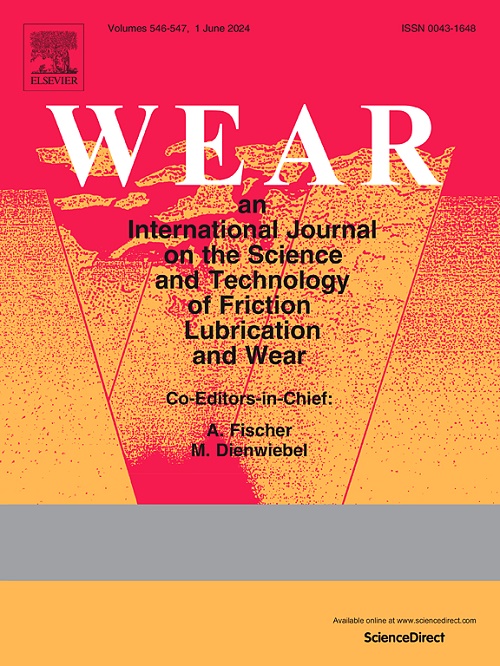采用基于特殊热相似模型的双盘装置进行胎面制动研究
IF 5.3
1区 工程技术
Q1 ENGINEERING, MECHANICAL
引用次数: 0
摘要
本论文展示了一种包含在双盘系统中的踏面制动系统的设计,用于对车轮和蹄片材料进行热力学研究。试验台由两个相互压紧的圆盘组成,模拟轮轨接触。气缸将有鳞片的制动蹄片推向车轮踏面,风扇喷嘴装置改善对流冷却。作为一个主要的新颖之处,这两个系统的设计都符合一种新的热缩放方法,该方法被专门确定为在缩放后的双盘上获得与全尺寸系统相同的温度场。本文详细介绍了该方法的数学背景,并用制动块和车轮的有限元热模型对该方法进行了初步验证。最终的双盘结构的最大优点是,它允许进行轮轨磨损现象的研究,以及车轮和制动蹄片之间的热-机械相互作用的研究,同时坚持尺度规则,证实了实验结果的有效性。本文章由计算机程序翻译,如有差异,请以英文原文为准。
Adapting a scaled twin-disc device for tread braking investigations based on an ad-hoc thermal similitude model
The present paper shows the design of a scaled tread braking system to be included in a scaled twin-disc system, to carry out thermomechanical investigations on wheel and shoe materials. The test bench consists of two discs, pressed against each other, simulating the wheel-rail contact. A pneumatic cylinder pushes scaled brake shoes against the wheel tread surface, and a fan-nozzle device improves convection cooling. As a major novelty, both systems are designed to comply with a new thermal scaling method, that is specifically identified to obtain the same temperature field on the scaled twin-disc as for a full-scale system. The paper thoroughly describes the mathematical background of the new thermal scaling method, which is then preliminarily validated with finite element thermal models for both the brake block and wheel. The greatest advantage of the final twin-disc configuration is that it allows to carry out investigations of wheel-rail wear phenomena as well as studies on the thermomechanical interaction between wheels and brake shoes, while adhering to scaling rules that corroborate the validity of the experimental results.
求助全文
通过发布文献求助,成功后即可免费获取论文全文。
去求助
来源期刊

Wear
工程技术-材料科学:综合
CiteScore
8.80
自引率
8.00%
发文量
280
审稿时长
47 days
期刊介绍:
Wear journal is dedicated to the advancement of basic and applied knowledge concerning the nature of wear of materials. Broadly, topics of interest range from development of fundamental understanding of the mechanisms of wear to innovative solutions to practical engineering problems. Authors of experimental studies are expected to comment on the repeatability of the data, and whenever possible, conduct multiple measurements under similar testing conditions. Further, Wear embraces the highest standards of professional ethics, and the detection of matching content, either in written or graphical form, from other publications by the current authors or by others, may result in rejection.
 求助内容:
求助内容: 应助结果提醒方式:
应助结果提醒方式:


